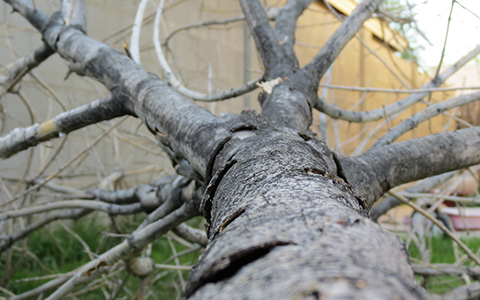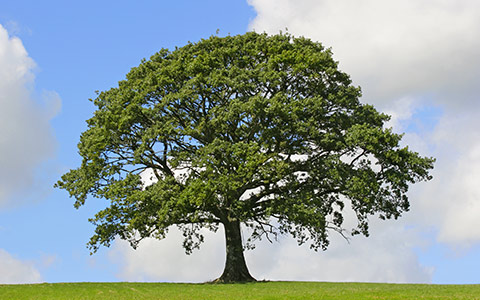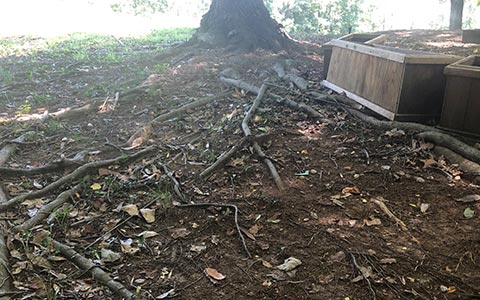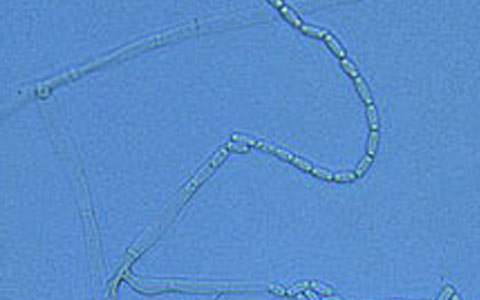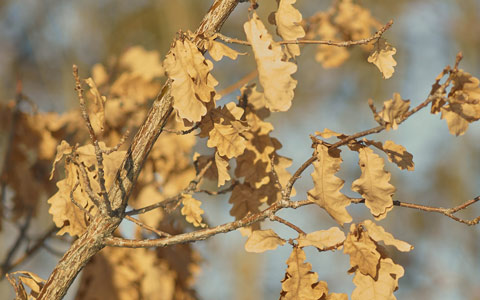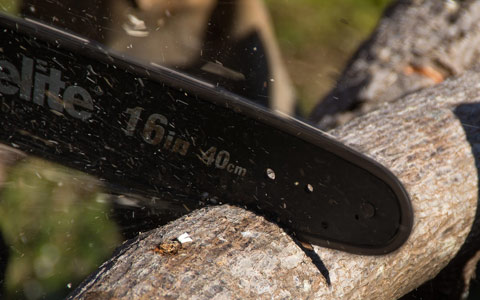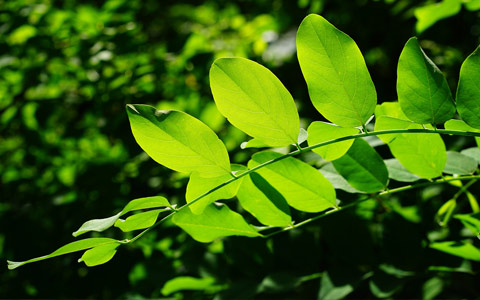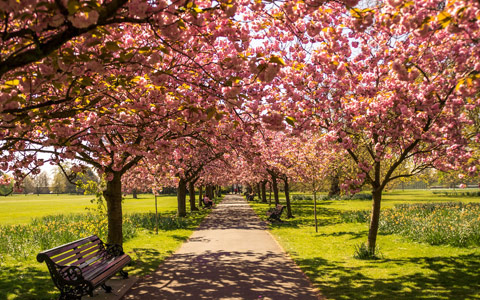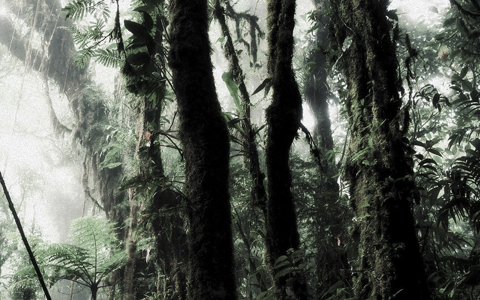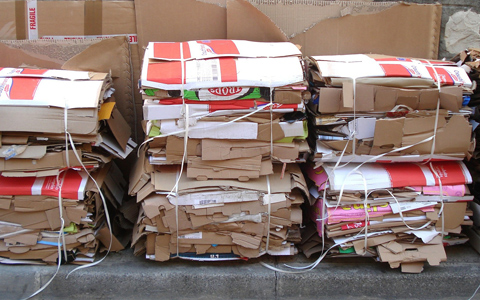
With some simple steps, you can avoid significantly damaging your potted Christmas tree while it’s in your home. Likewise, by taking a few essential measures into consideration, your potted Christmas tree will thrive outside for years to come.
72tree.com assembled the following list of care and planting tips for your potted Christmas tree.
Potted Christmas Tree Selection
Responsible tree care begins with your tree selection. The following will help you get the right tree for your holiday enjoyment and avoid transporting a potential infestation or tree disease to your landscape:
• Some highly sought after species for potted Christmas trees include Fraser fir, white pine, and Norway, white and Colorado blue spruces.
• The species should be adapted to your USDA hardiness zone
• The root ball or soil in the pot should be moist
• The tree should appear sturdy with even growth
• There should be no signs of disease or infestation
• Little to no needles should fall off the tree when shaken
• Branches and needles should be pliable when run through your hand
• Look for potted trees that are kept outside (these trees should be in a state of dormancy)

If the tree is purchased from a climate-controlled nursery, avoid trees with new growth at the end of its stems. This new growth (triggered by the warmth indoors) will appear bright green. It will not have time to harden before being planted outside and exposed to winter temperatures after the holiday.
Visit 72tree.com/trees-shrubs-usda-hardiness-zone-map/ to learn more about the hardiness zones and how to determine your precise zone.
Tip: Look for trees in the 4 to 5-foot range. Since these trees still have their roots and surrounding soil, they will be much heavier than live cut trees. The taller the tree, the more roots and soil are required. Thus, the shorter the tree, the more manageable it will be during transport and planting.
How To Bring Your Potted Christmas Tree Indoors
Now that you have the perfect tree for your holiday celebration, use the following steps to acclimate the tree to come indoors:
Garage Your Tree – When you arrive home, leave your tree in the garage for two to three days. This will allow the tree to get used to warmer temperatures and avoid stressing it.
Stressed trees are highly susceptible to successful insect and disease attacks.
Digging A Hole for the Tree – While the tree is acclimating to go indoors, take some time to prepare its planting location outdoors. Take the following into consideration:

Know the species height and width at maturity. Your tree is likely capable of reaching heights of 80 to 100-feet and width of 20-feet or more. Choose a location away from power lines and at least 30-feet from any structures or paved areas in your landscape.
Now that you have a location, dig a hole 3-feet across and as deep as the root ball or pot. Keep the dug up soil in the garage (protected from freezing), fill the hole with straw, and cover it with wooden planks. This will help you avoid significant delays in case the ground freezes.
Inspect Your Tree – Once acclimated, thoroughly inspect your tree once more for signs of insect infestation before bringing it indoors.
Some of the potential insect passengers you may find include:
• Aphids
• Bark Beetles
• Scale
• Lanternflies
• Stink Bugs
Visit 72tree.com/preventing-eliminating-christmas-tree-bugs/ to read more about Christmas tree bug control and prevention.
Timing and Duration – Potted Christmas trees should be brought indoors as close to your holiday celebration as possible. Unlike cut Christmas trees, potted trees will react to the warmer temperature indoors and begin to exit dormancy.
From the time your tree is brought indoors, you have about ten days before you will need to get it back outside. While your tree is indoors, observe the following to promote its health:
• Place the tree in a location far from heat sources, including fireplaces, vents, portable heaters, stoves, etc.
• Use led lights on the tree to avoid drying it out. If conventional light strings are used, be sure to limit the time they are turned on.
• Water the tree daily with 30 to 40 ice cubes placed on the root ball or the soil in the pot.
• Help the tree remain in dormancy by putting it in a cooler room with an abundance of natural light.
Tip: If you detect any new growth or signs of sprouting at any time, remove all of the decorations and lighting. It’s time to get it outside.

How To Take Your Potted Christmas Tree Outdoors
The same way you acclimated your tree to come indoors, you will need to acclimate it to go outdoors. You can accomplish this by removing all decorations and lighting, then moving it back to the garage for two to three days.
Planting Your Christmas Tree
The following steps will help you successfully plant your acclimated tree:
• Uncover the hole you previously dug and remove the straw
• Move the saved soil back to the side of the hole
• Fill the hole with water, let the water soak into the ground, and repeat
• Move the tree to the edge of the hole and gently lay it on its side (with the top of the tree pointing away from the hole)
• Carefully remove the pot (keep the soil intact)
• If the root ball is wrapped in burlap, leave the burlap on for now
• Slide the tree towards the center of the hole, so the root ball is at the center of the hole
• Raise the tree into its position (remove the burlap now)
• Loosen the soil in the root ball and free any circling roots
• Fill in the hole making sure the root flare does not get buried
• For stability, it may be necessary to stake the tree for the first 6 months
• Water the tree and add a 3-inch layer of organic mulch around the entire base without covering any part of the trunk

For more tips and guidance on successfully planting a tree, read 72tree.com/beginners-guide-tree-planting/
Note: If the ground has frozen, there is snow accumulation, or if your tree sprouted new growth and began to bud, don’t plant it just yet. Keep it and continue caring for it in the garage until the threat of freezing temperatures has passed.
Potted Christmas Tree Care And Planting
In this article, you discovered what it takes to care for a potted Christmas tree and plant it when your holiday celebrations are over.
By properly acclimating and caring for your potted tree, you can keep it from harm’s way and enjoy its beauty for years to come.
By neglecting the needs of your potted Christmas tree, it will likely end up stressed and suffering permanent damage.
Sources:
content.ces.ncsu.edu/selection-and-care-of-living-christmas-trees
canr.msu.edu/news/living_christmas_trees_another_real_tree_option
bbg.org/news/is_a_potted_christmas_tree_a_good_idea






